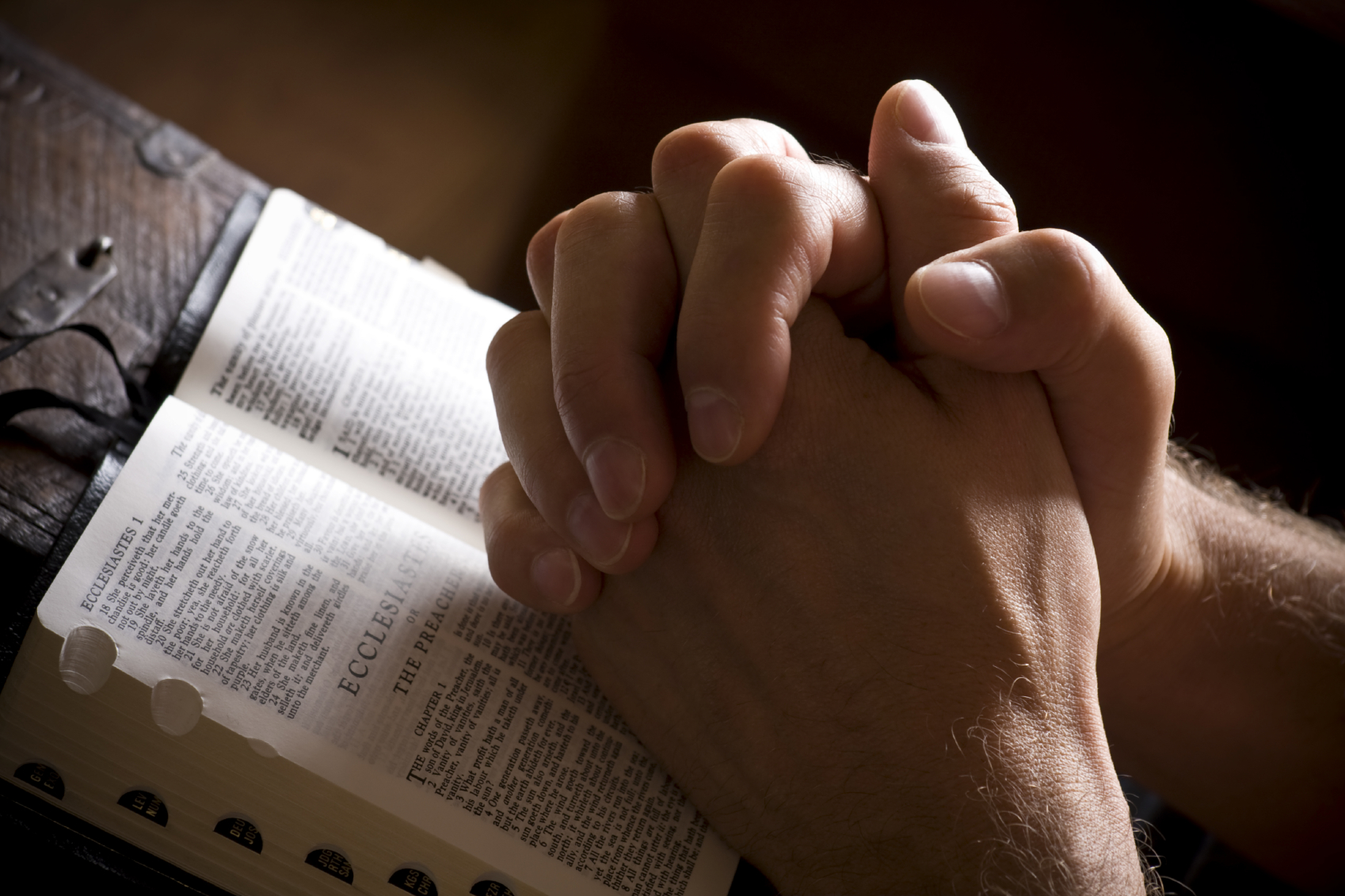Attitudes and Consequences
I. Introduction
Thomas Carlyle identified history as the essence of innumerable biographies. So, we study history as an attempt at self-knowledge, and, then, as an effort to see how the events and forces of the past have shaped us. “Those who ignore history have to repeat its mistakes” (George Santayana).
A. Old Testament attitudes
1. Jeremiah 6:16; 12:16; 31:21
2. Isaiah 1:10; 8:16-20
3. Malachi 4:4-6
4. Luke 16:29; John 5:39; 7:52
B. Old Testament examples
1. Hezekiah -2 Chronicles 29-31 ( cf. 29: 15, 25; 31:3; 4, 20-21).
2. Josiah -2 Chronicles 34:1-35:19. Read especially 34:19-21, 31-33; 35:4-5, 6, 12.
a. Sought Lord at 16 years of age.
b. Purged the land between 20th and 26th years.
c. Repaired Temple when 26 years old.
(1) Law found and read.
(2) People covenant to keep Law.
(3) Passover kept.
C. New Testament attitudes
1. 2 Timothy 3:14-17
2. 2 Peter 1:20-21
3. 2 Corinthians 5:18-214
4. 1 Corinthians 14:37; 1 Thessalonians 2:13; 2 Thessalonians 2:15
5. 1 Corinthians 4:6.
D. Historical attitudes
1. Roman Catholic
a. The “Church” is the ultimate authority. Scripture must be authoritative because the “Church” says so. Augustine was the main source of this attitude that still prevails today.
b. Truth is a “deposit” entrusted to the episcopate for preservation. If anyone wants to either hear from God or know what God’s word means he must go to one of God’s representatives, i.e. Catholic priests. Again Augustine is the main source for this attitude. The final consequence of this attitude was the doctrine of Papal Infallibility of 1870.
c. Scripture is only a means to reach love and then to be dispensed with. Notice the following quote from Augustine.
And thus a man who is resting upon faith, ·hope and love, and who keeps a firm hold upon these, does not need the Scriptures except for the purpose of instructing others (Nicene and Post-Nicene Fathers, Book I, Ch. 39).
d. A study needs to be made of Thomas Aquinas’ contribution to the Catholic attitude toward scripture.
(1) Aquinas was the first, as far as we know, to attempt to reconcile and harmonize the teaching of the church with philosophy, particularly the principles of Aristotle.
(2) In.the more than sixty works to come from his pen, all of the scholastic doctrines of the “church’ were organized into a complete and final system.
(3) His greatest “contribution” to the Catholic attitude toward Scripture was his teaching on papal infallibility. His reasoning was that since the authority to interpret the Bible was in the hands of the “church,” and since the Bible itself was in the hands of the clergy, then there must be a final infallible voice in determining points of doctrine . Who, in his estimation, would be more
qualified than the “head of the church,” the bishop of Rome.
e. The decisions of Catholic councils
(1) The council of Trent (1543-1563) formulated the teachings of the Roman Church into one document called “The Canons and Degrees of the Council of Trent.” A quote is necessary from this document.
I also admit that the holy Scriptures, according to that sense which our holy mother Church has held and does hold, to which it belongs to judge of the true sense and interpretation of the Scriptures; neither will I ever take and interpret them other-wise than according to the unanimous consent of the Fathers.
(2) The Vatican council reached to pinnacle of their temple when it declared that Pope pj_us IX was infallible in all the earth on June 18, 1870. Cardinal Gibbons declared in 1917,
We must, therefore, conclude that the Scriptures alone can-not be a sufficient guide and rule of faith because they can-not, at any time, be within the reach of every inquirer; because they are not of themselves clear and intelligible even in matters of greatest importance, and because they do not contain all the truths necessary for salvation.
NOTE: From a slow and gradual departure as the word of God, and the authority for all things pertaining to the church in its spiritual conduct and doctrine, the position of the Roman Church must be the ultimate end. It must either be the Bible as the standard and guide in all matters, or human wisdom as the standard, whether that human wisdom finds its expression in an alleged infallible head of catholicism, or in the individual human reason of Modernism, Sectarianism, Cultism, or in the refusal of some preachers to allow the Bible alone to be their guide.
2. Protestant Reformation
a. Martin Luther believed there was an absolute supremacy of the word of God over all the wording or reasoning of men, regardless of their position. We find in all his works a refreshing and challenging appeal to the scriptures. It was his belief that all of the word had to be understood literally. This led him to substitute consubstantiation for transubstantiation. Except for this fascination with literalness, he could have united his efforts with Zwingli. He did not intend to establish a separate church, but the attitude of the Catholics’ attitude toward him, his followers found it necessary to do so.
b. Ulrich Zwingli led a reformation movement in Switzerland at the same time Luther did in Germany. Zwingli’s attitude toward scripture was more nearly the forerunner of the nineteenth reformation. Notice the following from History of the Great Reformation of the Sixteenth Century in Germany, Switzerland, etc. p. 342 by J.H. Merle D’Aubigne.
Luther was desirous of retaining in the Church all that was not expressly contradicted by Scripture, while Zwingli was intent on abolishing all that could not be proved by Scripture. The German reformer wished to remain united to the Church of all preceding ages, and sought only to purify it from everything that was repugnant to the word of God. The Reformer of Zurich passed back over every intervening age till he reached the times of the apostles; and, subjecting the church to an entire transformation, laboured to restore it to its primitive condition. Zwingli’s reformation was the more complete.
NOTE: Since Luther based his movement on the word of alone, why such a difference between his work and that of the Campbell-Stone movement? The answer is simple. Luther never attempted a complete restoration of Apostolic Christianity. The Augsburg Confession of Faith contains doctrines which are purely of Papal origin. Notice the two quotes from Briggs on Pages 33-34.
3. Early American Congregationalists and Baptists
a. The Puritan and Pilgrim movements of Europe were seedbed of the Congregational Churches of America. There bone of contention with the established churches was the issue of Church government. In their early days-they seemed to have no “formal” confession of faith. They did have what they called “a covenant.” When the Unitarian controversy arose they did begin to put a creed in the constitution of their churches and later they accepted the Savoy and Westminster Confessions. It is only in their form of episcopal church government that they resembled the reformers soon to come.
b. The Baptists were to be much more intimately associated with the new Reformation.
(1) They were congregational in their government.
(2) They not only practiced immersion but were vocally opposed to sprinkling, affusion, or aspersion as baptism.
(3) They accepted the Scriptures as the standard for all religious practices.
“It has never seemed to them (Baptists, RR) sufficient to show that a doctrine or practice, made a matter of faith, is not contradictory of scripture; it must be distinctly a matter of Scripture precept or example to command their allegiance or secure from them a recognition of its right to exist.” A.H. Newman, A History of the Baptist Churches in the United States, pp. 1,2.
NOTE: It needs to be noticed that the reformers were immediately resisted and persecuted by congregationalists. They were initially accepted by the Baptists, but two things brought about their rejection and persecution by the Baptists also. We will notice these two things in future lessons.
NOTE: With this lesson as a brief background of the attitudes developed within “Christendom,” we are ready to examine the Reformation or Restoration Movement to trace the development of an attitude within its ranks that has consequences even today.
II. ADVOCATES OF UNITY AND RESTORATION (REFORMATION).
A. Latin Treatise (Unknown date and author appeared in Germany in 1625).
“If we would but observe unity in essentials, liberty in non-essentials, charity in all things, our affairs would certainly be in the best possible situation.”
B. Richard Baxter, the Puritan minister -c. 1650-1660.
“In fundamentals unity, in non-fundamentals (or doubtful things) liberty, in all things charity.” This was presented to King Charles II with an appeal to reform the Established Church. One of the interested audience was Bishop Usher of chronological fame.
C. George Calixtus, a Lutheran in the late 1600’s, called for unity on the basis of “what has been believed always, everywhere, and by all.” He meant, of course, the simplest gospel that could be found.
D. John Campanus wrote a treatise called “Restitution” in 1532.
1. It pled for a “Catholic Restitution” that would seek truth “among the sects and all the heretics.”
2. He believed it was the loss of the apostolic view of God and man that caused the church to fall away.
3. He insisted that he was “orthodox,” because he was apostolic.
E. Michael Sevetus was executed by Calvin in 1553. He wrote “The Restitution ( Restoration) of Christianity,” which cost him his life. It contained the following principles.
1. That the primitive church apostatized into Roman catholicism.
2. That the Reformation had failed because it had not gone far enough.
3. That baptism was by Immersion, only for believers, and was for the remission of sins.
4. That the Lord’s Supper was to be taken weekly and was necessary for spiritual life, just as bread was necessary for physical life. The believer was to prepare for eating the supper by repentance, prayer, fasting, and almsgiving
F. Others include the following.
1. Hugo Grotius -1640.
2. Christoph Pfaff -1720.
3. John Durie -1700-1750.
III. EARLY BEGINNINGS
A. Among The Methodists
1. James O’Kelly of North Carolina introduced a motion at the Methodist General Conference in 1972 that would give the circuit riding preachers an appeal to the conference to change the bishop’s decision concerning the preacher’s work. The bill was defeated, and the preachers influenced by O’Kelly left the conference with him.
a. They tried to form a new conference, but, after much discussion, they discarded the Discipline with all its laws and titles and took the name “The Christian Church. They decided to be guided by the Bible only in all matters of faith, practice, and government.
b. Five principles were adopted as the doctrinal foundation of the “Republican Methodists.”
(1) The Lord Jesus Christ is the only Head of the Church.
(2) The name Christian to the exclusion of all party and sectarian names.
(3) The Holy Bible, or the scriptures of the Old and New Testaments, is our only creed, and sufficient rule of faith and practice.
(4) Christian character, or vital piety, the only test of church fellowship and membership.
(5) The right of private judgment, and the liberty of conscience, the privilege of all.
c. Rice Haggard, one of the chief men in this conference, later became associated closely with Barton w. stone. It was he who made the suggestion that they use the name “Christian” exclusively. This seems to be the only connection between this movement and that of Stone.
d. These attitudes were influenced greatly by the work and attitude of John Wesley, the founder of Methodism. Wesley had said, “We will be downright Christians.” He gave all-sufficiency to the Bible.
B. Among the Baptists
1. Elias Smith, ordained as a Baptist preacher in 1792 rejected Calvinism, adopted Universalism, gave it up quickly and began to search the word for guidance. He soon withdrew from the Baptists and established a “Christian Church” in New Hampshire. It started with 22 people and one year later numbered 150 members. He has been called “An unstable and in some respects an unheroic character, he was a pioneer not only in the wilderness of Vermont, but in the effort to discover in the New Testament a program for simple and undenominational Christianity.”
2. Abner Jones, who worked alongside Elias Smith, established an independent church at London, New Hampshire.
a. He had been baptized into the Baptist Church in 1793. Shortly afterwards, he began to study and preach occasionally. He was soon led to reject Calvinism and his fellows began to give him the cold shoulder. He became more determined than ever to preach only what he could find in the Bible.
b. Supporting himself as a physician, he not only started the church in London but also in Hanover and Piermont, New Hampshire.
NOTE: This New England movement owes its primary significance to the fact that men and women were looking in the direction of the New Testament order of things and away from sectarianism. That they did not go far enough is only to be expected when one considers the natural tendency to make change slowly in religion. They were traveling an uncharted course. They were thinking their way along. It would take time to get these thoughts developed, and, for the most part, it remained for others to carry on with these thoughts from here.
IV. The Movement Begins In Earnest
A. Barton W. Stone was born on December 24, 1772 at Port Tobacco, Maryland. When he was seven years old when his father died. Shortly thereafter his mother moved the family to North Carolina.
1. The Revolutionary war was raging within ear range of his home. Here as a lad he got to see war, and he learned to hate it. Fires of liberty were kindled in his soul that in later years were to find expression in a violent dislike for creed-alism in religion.
2. When the war ended the clergy was no longer supported by the state and most of them returned to England. The people were then left in spiritual destitution. The Lord’s day became a day of pleasure, and most meeting houses were deserted.
3. The Methodists, to which Stone belonged, were known for believing “salvation by works” (A far cry from their belief today). Stone listened .to the legalist preaching and the fervent debates of his day and got somewhat disgusted, and soon lapsed into total religious indifference.
4. He attended a college in North Carolina that had a tremendous religious influence. This, at first, turned Stone cold, and he decided to leave for another college in Virginia. On the night he intended to leave, a storm hindered his departure. What a difference there might have been in stone’s life were it not for that-storm!
5. A Presbyterian preacher, James McGready, touched stone’s heart the next night after the storm. stone struggled for a year, then he heard McGready again and was severely convicted. He joined the Presbyterian Church.
6. He was licensed to preach in 1796, although he had really begun to doubt that the doctrine contained in the Westminster Confession of Faith was not, on the whole, according to the scriptures. When the Transylvania Presbytery met in 1798, Stone was asked: “Do you receive and adopt the Confession of Faith, as containing the system of doctrine taught in the Bible”? He replied: “I do as far as I see it consistent with the Word of God.” His face was turned in the right direction.
7. He moved to Cane Ridge, Kentucky where there was a tremendous “revival” beginning. In 1801 the roads around Cane Ridge were crowded with carriages, horses and wagons with people hurrying to meeting. It has been estimated that from twenty to thirty thousand people were in attendance at this Great Revival. There were eighteen Presbyterian preachers plus some Methodists and Baptists. Meetings were held on the Ridge at various spots and generally there were five or six preachers holding meetings at one and the same time.
8. Stone’s message at this Revival was one of the universality of the gospel and the single demand of faith. This was bound to get him into trouble with the Calvinistic Presbyterians he was associated with. It did! He was accused of heresy by the Westminster Presbytery in 1803. Stone presented an objection to the charge and stated that the Confession of Faith was a hindrance to the Revival. An interesting document that came out of this experience was the establishment and quick demise of the Springfield Presbytery, started by Stone and four other men (Read The Last Will And Testament of the Springfield Presbytery).
9. For a number of years Stone’s mind was disturbed on the question of baptism. There seemed to be no question in his mind that the design of baptism was the remission of sins, but he seemed to feel no compulsion to press it in his teaching and preaching. It would be by his future contact with the Campbells that would convince him to press the point of purpose.
10. Notice Tolbert Fanning’s estimate of Stone upon hearing of his death:
The history of Brother Stone would be the history of the most important religious movements in the United States, for nearly half a century … To be sure his talent was not, perhaps, quite so brilliant as some others; but his acquaintance with the Scriptures was extensive and critical, and a more humble, conscientious and pious man cannot be found. If justice is ever done to him memory, he will be regarded as the first great American reformer – the first man, who, to much purpose, pleaded the ground that the Bible, without note, commentary or creed, must destroy anti christian powers, and eventually conquer the world. Although I have heard Father Stone slandered, and his views grossly perverted, yet never did I hear mortal man utter a syllable derogatory to his moral worth. A man more devoted to Christianity has not lived nor died and many stars will adorn his crown in a coming day.”
NOTE: Stone’s two-fold plea for Christian unity and the destruction of creeds is stated in his own words as follows. “We are determined therefore to promote Christian union, to cast all such books to the moles and bats, and to take the Bible alone as the only standard of faith, practice and discipline.”
NOTE: Long before the Campbells entered the picture -Stone believed “differences of opinion need not break fellowship,” and “jarring creeds and party spirit cannot bring peace to the church, but love, faith, and obedience can.” Stone said of his withdrawal from the Presbyterian Conference, “It is the inalienable right of every moral agent to withdraw from any society, when he thinks the right of conscience are invaded.” Stone felt the tension of being a “unity movement,” yet a “separated people.”
NOTE: Two comments separated by nearly 100 years.
1. J.H. Garrison -Christian Evangelist -1897. “That there has been among us, at times, manifestations of a party spirit quite inconsistent with the catholicity of our position, we are compelled to admit.”
2. Reuel Lemmons -Firm Foundation
“A movement which began on the glorious note of uniting the Christians in all the sects has degenerated in a mere century and a half into subdividing that unity into narrow, sectarian camps … Each splinter splinters further. This very obvious fact is evidence that something is basically wrong in the attitude and aim of the movement.”
B. Thomas Campbell had a very interesting religious background. He had a high regard for the Bible, which influenced his son Alexander from a very early age. He would come into his father’s library and notice that the Bible and the concordance was open on the desk and all of the other books still on the shelves untouched. Gradually, Thomas was turning more and more to the Bible and the Bible alone.
1. Thomas knew about division first hand. In 1732 a group called the Secession Church broke away from the Scottish Presbyterian Church. In 1789 the Seceders divided into Burghers and Anti-Burghers on the question of the burgesses taking an oath. The burgesses (officials) of the towns required oaths binding the people to support the religion practiced in that realm. Those who opposed the oaths as unlawful were known as the Anti-Burghers. In 1799 both branches·of the Seceder church divided again into New Lights and Old Lights on the question of whether the Solemn League and Covenant should be made a term of communion. Thomas Campbell was an Old Light Anti-Burgher in the Seceder Presbyterian Church. He was well acquainted with religious division. Amid all of this religious division, Thomas Campbell worked hard for unity and sought to bring himself and his family closer to God. He was led more and more to depend upon the Bible and made firmer attempts to be led only by its precepts and examples.
2. Due to ill health, Thomas came to America, intending to call for his family as soon as he was able to do so. His independent spirit and dependence upon the word of God for his theology caused him to be accused of heresy again and again before the officials of the Presbyterian Church. He finally had to separate from them and join the Baptist Church. He was heading in the right direction. In 1809 Thomas wrote Declaration and Address just a few months before his family, including Alexander, arrived from Scotland. This document emphasizes the prevailing attitude of his heart A total trust in and commitment to following the word of God in all its precepts and examples. Although, in the spirit of the day, the Address is somewhat verbose, it is still worthwhile to be read in its entirety. Notice the following summary outline of the ideas set forth.
a. Division is terribly sinful, obstructing the mission of the church.
b. It is the responsibility of Christians to be more sensitive to the divisions within the church and do something about them, however insurmountable the task may appear.
c. Divisions, for the most part, are over matters of private opinion, not over the essentials.
d. Christ is the only source of unity, his word the only terms.
e. The call to unite the church is not unreasonable, the time is not unseasonable.
f. Since Jesus prayed for the unity of the church, it must follow that adequate means can be found. We can do it!
g. Since we will be one in heaven, we must be one on earth.
h. We must begin to associate with each other and be less interested in our own party, or unity will never be achieved. United we shall prevail!
i. With nations being ravaged by war, how can we remain a divided church?
j. our efforts for unity are but a humble beginning, so we solicit the help of others, for the collective graces of the whole church will assure us success.
NOTE: Probably the most famous paragraph in the movement is found in the first proposition of the Declaration.
That the Church of Christ upon earth is essentially one; consisting of all those in every place that profess their faith in Christ and obedience to him in all things according to the Scriptures, and that manifest the same by their tempers and conduct, and of none else as none else can be truly and properly called Christians.
NOTE: The third proposition of the Declaration points to a practical way of restoring unity.
Nothing ought to be inculcated upon Christians as articles of faith, nor required of them as terms of communion, but what is expressly taught and enjoined upon them in the word of God. Nor ought anything to be admitted as of Divine Obligation, in their Church constitution and managements, but what is expressly enjoined by the authority of our Lord Jesus Christ and his apostles upon the New Testament Church, either in express terms or by approved precedent (Emphasis mine, RR).
NOTE: The following quote from the Declaration and Address seems to really express the attitude of the writer best.
No man has a right to judge, to exclude, or reject his professing Christian brother, except insofar as he stands condemned or rejected by the express letter of the law.
The great fundamental law of unity and love ought not to be violated to make way for exalting human opinions to an equality with express revelation, by making them articles of faith and terms of communion.
The first and foundational truth of our Christianity is union with Christ, and the very next to it in order, union with each other in him -“that we might receive each other, as Christ has also received us, to the glory of God.
3. Although his son Alexander will be the outstanding character in the corning “Reformation,” Thomas was the true pioneer and the constant mentor in the movement. In over forty years in America he had seen the movement grow from about 20 people in 1809 to over 200,000 in 1851. At 88 years of age he preached his last sermon on the text, “Thou shalt love the Lord thy God with all thy heart, and with all thy soul, and will all thy mind, and thy neighbor as thyself.” He died as he had lived, believing that love was the ultimate need of man.
C. Alexander Campbell was having similar doubts to his father’s. In 1809 when he was only 19 years old he went before the elders of the Anti-Burgher Seceder Presbyterian Church in Glasgow, Scotland to obtain a metal token that would allow him to partake of communion. There were about 8 or 9 shifts necessary for the nearly 1000 communicants to participate. Because of serious doubts Alexander kept postponing his decision. Finally, hE dropped his token into the plate, but declined the elements when passed before him. He walked out a free man, realizing that life would never be quite the same now that he had turned his back on the church of his youth. Remember, that this was without any knowledge of his father’s struggles in the New World. How did Alexander arrive at this decision in his life?
1. His doubts about the Communion can be traced to the influence of the Glasite Independents and the Haldane brothers in general and to Greville Ewing in particulars. When the Haldanes set out to form their first “Congregational Church” in Edinburgh, it was Greville Ewing who designed its form of government, which allowed for a lay ministry, a free observance of the ordinances, and the Bible as the only guide in religion.
2. It was in Ewing’s home and in the church he “pastored” in Glasgow that Alexander was led to take the issues of reformation seriously. Ewing had what he called “discussion groups” for university students in his home, and it was here that he and-Alexander became trusted friends. Ewing was much closer in attitude to the reformation of the ancient order than were the Haldanes. For instance, it was Ewing who first introduced the celebration of the Lord’s Supper every Lord’s day in his Glasgow church, a practice that eventually became a unique feature of the Campbell movement in America. Yet Ewing insisted that sprinkling and the baptism of infants were scriptural. This probably explains why Campbell was so reluctant to yield on these issues.
3. There were several elements of reform that Ewing emphasized which would become a part of Campbell’s attitude.
a. A devotion to the Scriptures themselves rather than the creedal emphasis of the clergy of the day .
b. An independent or congregational form of
church government.
c. An emphasis upon the rights of lay ministers, along with a rejection of clerical privileges and dignities.
d. A plurality of elders in each church.
e. The practice of mutual sharing and edification. The church where Ewing preached had a special meeting for this each week.
f. The view that faith is not supernaturally, or subjectively, induced, but is based upon the belief of the spiritual testimony of Scripture. The appeal was to man’s intellect as well as to his heart.
SPECIAL STUDY: BACKGROUND OF CAMPBELL’S ATTITUDE
A. Isaac Newton and Francis Bacon
1. The Campbell’s approached the mysteries of the Bible much like Newton and Bacon approached the mysteries of the universe, in search of facts and of principles to interpret those facts .
2. The scientific method was so different that there was no way for the old world to understand the new. Bernard Russell says it well when he points out that Plato and Aristotle could not have made head or tail of Newton.
3. Campbell in the Owen-Campbell debate stated: “Everything” says the great teacher (Newton, RR), “is to be submitted to the most minute observation.
No conclusions are to be drawn from guesses or conjectures. We are to keep within the certain limits of experimental truth. We first ascertain the facts, then group them together, and after the classification and comparison of them, draw the conclusion. There are generic heads or chapters in every department of physical or moral science. We are never to shrink from the tests of those principles.”
NOTE: A SUMMARY OF NEWTON’S PRINCIPLES.
1. Get the facts.
2. Group the facts.
3. Organize the facts.
4. Compare the facts.
5. Draw the conclusion.
4. Francis Bacon lived a full century before Newton. He had a very investigative mind and has been called “The Father of Induction.” Notice his “Idols Of The Mind.”
a. Idols of the tribe stem from the sluggish mind that is satisfied and too lazy to think, and that accepts only those things that support its superstitions and traditions.
b. Idols of the cave relate to the habitual mind that finds security in the way it has always believed and acted; it wants things kept simple, even it they be erroneous, so that its perceptions are kept intact.
c. Idols of the market place are the pet words and phrases that are invented to shade one’s view of reality. It specializes in blurred, indistinct meanings.
d. Idols of the theater are fanciful theories and exotic philosophies that only confuse the real facts.
NOTE: Campbell was impressed with Bacon.
(1) Bacon’s definitions.
* Fact: Something said or done.
* Observation: Seeing and hearing facts.
(2) “All true and useful information is an acquaintance with facts.” -Bacon. “He that made the heart of man and gave him an intelligent spirit knows that facts alone can move the affections and command the passions.” -Campbell.
(3) ATTITUDE: Faith is belief in testimony (facts) drawn from what the Scriptures explicitly say, while opinions are what one supposes those facts imply, or ideas drawn from the silence of Scripture.
(4) Bacon thus helped Campbell to develop an inductive approach to the Bible, in which one draws conclusions only in terms of what is observably evident, rather than the traditional deductive approach of having one’s conclusions already in hand, and thus goes to the Scriptures in support of them.
B. John Locke was a “Christian” philosopher and was called by some “The Father of Logic.”
1. He spent the last 15 years of life reading nothing but the Bible. The day before he died, Locke exalted the love God had shown to man by justify-ing him by faith in Christ.
2. When asked about the shortest and surest way to the true knowledge of the Christian religion, He replied, “Let him study the Holy Scriptures, especially the New Testament.”
3. Locke’s threefold plea for (1) freedom, (2) toleration, and (3) a better understanding of the nature of knowledge made him a hated and hunted man. He is the only great philosopher in history that had to hide from the law under an assumed name.
4. His Essay Concerning Human Understanding was formally condemned at the University of Oxford. He wrote A Letter Concerning Toleration while hiding from enemies, published it anonymously revealing in his will that he had written it.
5. Locke’s major contributions.
a. He wrote the following: “I esteem toleration to be the chief characteristic mark of the true church.” He pointed to the glaring inconsistency of tolerating whoredom, fraud, and malice and yet not allowing for conscientious dissent.
b. He was among the first to call for a separation of church and state (which even the Reformation had not called for). Notice his definition of the word church. “A voluntary society of men, joining themselves together of their accord in order to the public worshipping of God in such manner as they judge acceptable to Him, and effectual to the salvation of their souls.”
NOTE: The restoration statement that “Nothing is to made a test of communion that God has not made necessary to salvation.” goes back to John Locke in 1689.
c. He states that “our knowledge (with the exception of logic and mathematics) comes through experience. Locke thus rejects innate (inborn) ideas, a notion as old as the ancient Greeks and popularized by Descartes. Nature may confirm what God reveals about himself, but it is not itself a means of knowing God.
d. Man knows by observing particulars, not by deducing from a cluster of universals that are subjectively inspired (as Plato concluded). Campbell’s Sermon on the Law comes from this principle.
e. His view of the relationship between reason and revelation also had a strong effect upon Campbell. * Revelation is always the source of our knowledge. * Reason is the faculty by which we reflect upon the things revealed. Reason cannot have creative power, it cannot make ideas out of nothing.
f. Locke’s attitude toward truth: Since truth is hard to ascertain one should hold his opinions with some measure of doubt. He made the important distinction between a love for truth and a love for.some particular doctrine which is proclaimed as “the” truth. His statement -“not entertaining any proposition with greater assurance than the proofs it is built upon will warrant” -is stated by Campbell as “our faith in something should be no stronger than the evidence for it.” Compare Hebrews 11.
C. Thomas Reid was the founder of the Scottish School of common Sense. (Adam Smith,one of his followers, influenced the political ethics of the Reformers.)
1. Main point of this movement: All valid religious knowledge is traceable to the divine revelation in Scripture.
2. This school arose as a protest to the skepticism of David Hume, also a Scot and an empiricist.
a. Hume questioned the principle of cause and effect, dismissing it as sheer speculation.
b. Hume doubted even that there is a world apart from human consciousness; and, it there is, its existence cannot be proved, just as God’s existence can be neither proved nor disproved.
3. Definition of the Common Sense Philosophy: The view that the common man has the power to know the external world and its relations through his senses.
4. Dugald Stewart was Campbell’s favorite in this School. Stewart names the following “Laws.”
a. I exist.
b. I am the same person today that I was yesterday.
c. The material world exists apart from my mind.
d. The general laws of nature will continue to operate as they have in the past.
e. There are intelligent people beside myself.
f. The empirical method calls for (1) observation, (2) experimentation, and (3) trial and error.
D. The Scottish Reformers.
1. John Glas was extremely influential upon the effort to “reform” the Established church in Scotland.
a. He believed it was wrong for the church to be aligned with the State.
b. He believed the church ought to be governed by the simple order found in the New Testament, rather than by synods and councils.
c. He believed each church should be autonomous and should be patterned after the primitive churches.
NOTE: GLASITE PRACTICES
* Weekly communion
* Plurality of elders in each church
* Scriptural names, esp Church of Christ
* Distinguished Lord’s day from Sabbath
* Baptism was remission of sins (Did not believe it was only by immersion and did not repudiate infant baptism)
* Faith was objectively obtained, not subjectively imposed
* PASSION: RESTORE NEW TESTAMENT CHRISTIANITY. Discuss approach to Acts 2:42
2. Robert Sandeman, Glas’ son-in-law, established a group who called themselves “the church of Christ” in Portsmouth, New Hampshire in 1765. Among their characteristics were the following things.
a. Weekly communion
b. Reliance on Scriptures and rejection of creeds
c. The name “church of Christ”
d. The rule of elders in autonomous churches
e. Mutual ministry
f. Rejection of titles for preaching
g. Passion for restoring the New Testament church
h. Scientific approach to the faith
3. The Haldanes and Greville Ewing built their movement on this statement. “It is not our desire to form or extend the influence of any sect. Our whole intention is to make known the evangelical gospel of our Lord Jesus Christ.” (Walter Scott was converted by a man named Forrester -a Haldane preacher.) Among their outstanding characteristics were the following:
a. A belief in the all-sufficiency of Scripture
b. Congregational independence
c. The rule of elders
d. Weekly communion
e. The practice of immersion
f. Reading and teaching central in assemblies
g. Wore no particular names
h. No distinction between clergy and laity
i. Passion to restore the primitive faith by preaching the apostolic gospel








